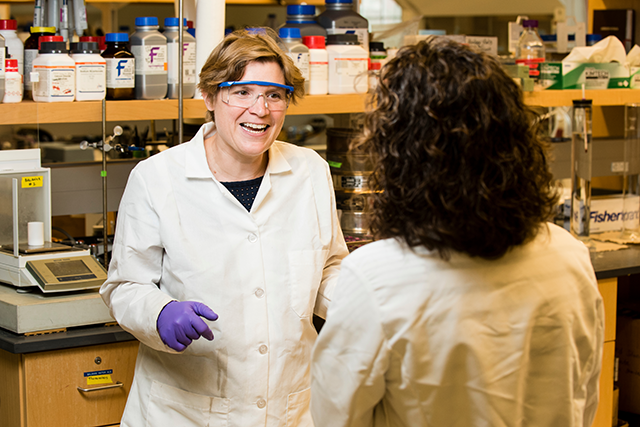Effective methods for disease prevention

Associate Professor Daniele Lantagne is no stranger to getting her hands dirty. With students and postdoctoral scholars in the Civil and Environmental Engineering Department, Lantagne focuses her research on effective hygiene and sanitation practices in low-income and developing regions around the world, as well as in locations affected by natural disasters, disease outbreaks, and conflicts.
Studying water use and treatment in the context of human health blends Lantagne’s interests in engineering and policy research and allows for rigorous work in the lab and in the field. One of her primary research questions is: “How do you make water sanitation and hygiene programs the most effective such that they can reduce the transmission of disease?”
Recently, this question helped guide a large-scale undertaking for Lantagne and her group. The research focused on the prevention of transmission of Ebola in community and healthcare facilities, using lab and field testing to determine the efficacy of common hygienic practices in disease contexts. One strand of the work was on the materials used to wash hands and surfaces for the prevention of transmission, namely, chlorine solutions.
“Experts widely recommend using 0.05% chlorine to wash living things—hands—and 0.5% chlorine to wash non-living things, like bodies and surfaces, to prevent ongoing transmission of Ebola,” says Lantagne. “But we don’t know the chemistry of the chlorine compounds, we don’t know how well they clean surfaces, and we don’t know how well they clean hands.”
The group worked to address these three strands of inquiry with a combination of traditional lab work and simulations of field situations. Undergraduate students used more conventional lab practices to determine the shelf life and best practices for testing solutions containing different chlorine compounds. To take the lab work further, graduate students and postdoctoral scholars deployed a bacteriophage that could represent Ebola in a lab setting and tested the effects of chlorine solutions on surface cleanliness. The researchers were able to apply their methods to surfaces found in Ebola treatment units (ETUs) like heavy duty tarp and nitrile, rather than relying on common lab surfaces like stainless steel.
Finally, the group ran tests on volunteers who washed their hands 10 extra times per day, testing and surveying people to see if the washing resulted in skin breakages that could increase transmission of disease. Researchers also put the bacteriophage on volunteers’ hands before washing and tested the effects of handwashing on removing the substances.
The group published nine manuscripts detailing results from each area of research and looked at the results in combination with the goal of better implementation in emergency fieldwork, publishing their findings in journals including Water and Environmental Science & Technology and PLoSOne. “It’s about collaboration,” Lantagne says, citing the work of students from high school to doctoral level, as well as medical professionals and emergency workers, in answering the research questions. “I’m… interested in how well something works when it hits the ground, in the household, in the low-income context, in the emergency, and how to make sure it can work the best it can.”
Moving forward, Lantagne plans to study “commonly implemented but severely under-researched interventions” of cholera transmission around the world, and continue to develop methodologies for health and water treatment that can be applied in a variety of emergency situations. “Whatever disease is next,” she says. “Having the techniques and tools to rapidly respond” is imperative to keeping people safe and healthy.
Department:
Civil and Environmental Engineering